Do you want to learn interesting facts about snapping turtles? We’ll talk about their physical description, habitat, offspring, and more!
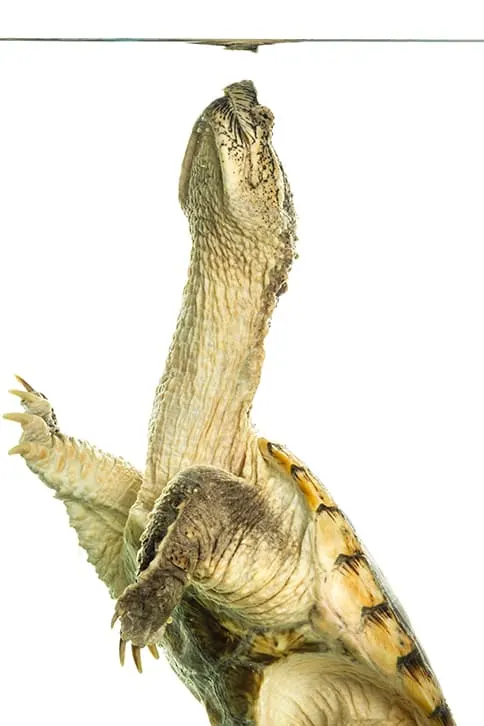
There are two species of snapping turtles: the common snapping turtles and the alligator snapping turtles.
Here are some alligator turtle facts:
- Alligator snapping turtles live in the southeastern United States.
- Alligator snapping turtles are legally protected in several states because they are endangered.
- Alligator snapping turtles have spiky heads and shells.
- Alligator snapping turtles are the world's largest freshwater turtles.
- Alligator snapping turtles can live up to 15 years longer than common snapping turtles.
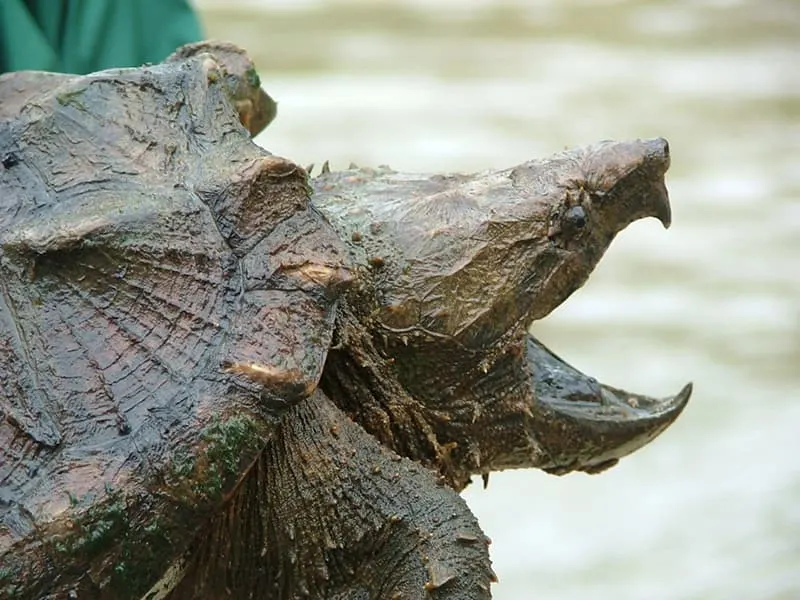
You can learn more about the alligator snapping turtle by reading this post.
The rest of this post will focus on the common snapping turtle.
Physical Description
Common snapping turtles have two dark eyes set in a large head with a hooked jaw. They have four legs and five claws on each webbed foot. Their top shell is between eight and eighteen inches long. Their stomachs are covered by a smaller shell. Snapping turtles have bumpy skin. A common snapping turtle’s tail is almost as long as its shell. The color of a snapping turtle ranges from tan to dark black.
Habitat
Common snapping turtles are found throughout North America. They can be found from the Rocky Mountains to the East Coast. These turtles are also found from Southeastern Canada to the Gulf of Mexico. They live in slow-moving bodies of water with sandy or muddy bottoms. Snapping turtles can be found in rivers, ponds, and streams. Marshlands and wetlands are also habitats for common snapping turtles.
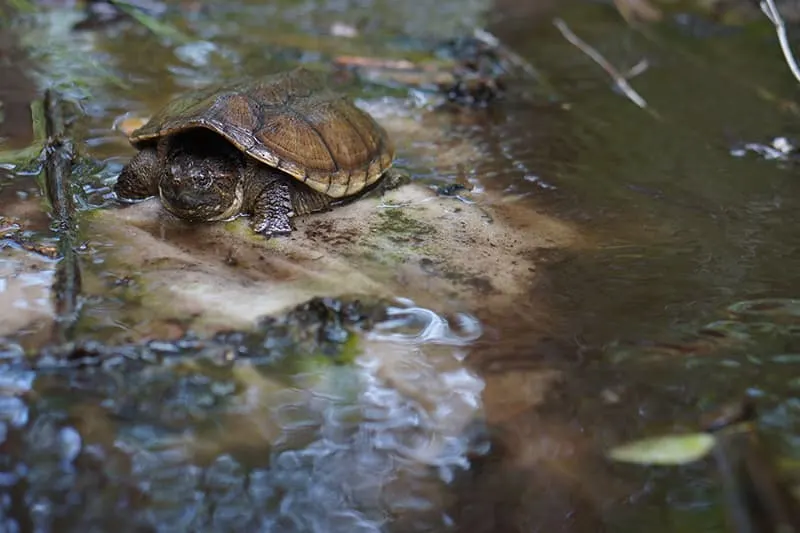
Habits
Snapping turtles are solitary creatures who spend more time in the water than on land. They often float near the surface of shallow water. Snapping turtles are mostly nocturnal. They are most active at dawn and dusk when they hunt. Snapping turtles hide in the mud to ambush prey. They bury themselves so that only their eyes and nose are visible. They quickly stick their necks out and snap prey up as it swims by.
Snapping turtles only venture onto land for specific reasons. A snapping turtle will venture onto land to search for a new habitat or to lay eggs.
These turtles are aggressive when they are taken out of the water. This is because they are somewhat helpless since they can’t fully retract into their shells.
Diet
Common snapping turtles are omnivores. They eat whatever is easiest to find and catch. A common snapping turtle's diet includes aquatic vegetation, worms, insects, fish, frogs, and even ducks. Their powerful jaws enable them to eat a wide variety of creatures.
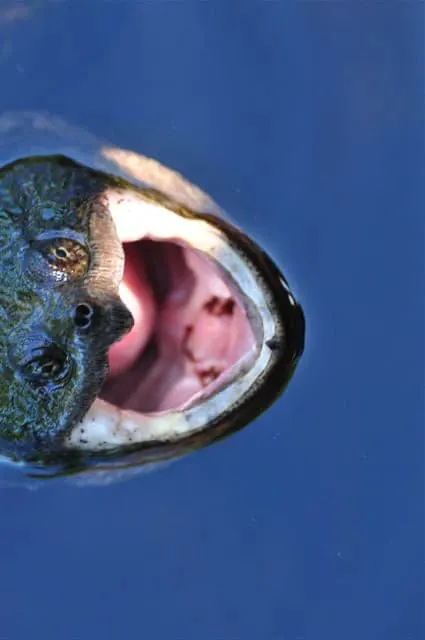
Offspring
Sometime after mating, the female ventures onto land to search for a nesting site. When she finds a place she likes, she digs a hole four to seven inches deep. Then she lays her eggs. She will lay anywhere from twenty to forty eggs.
After she lays her eggs, she covers them up and returns to the water. It takes the eggs between eighty and ninety days to hatch. The eggs are vulnerable because animals like racoons and foxes find the eggs and eat them.
When they hatch, baby turtles are about the size of an American quarter. The baby turtles start their crawl towards the water as soon as they hatch. Young turtles typically eat aquatic plants until they learn to hunt. Male common snapping turtles reach adulthood around the age of five. Female common snapping turtles reach adulthood around the age of seven.
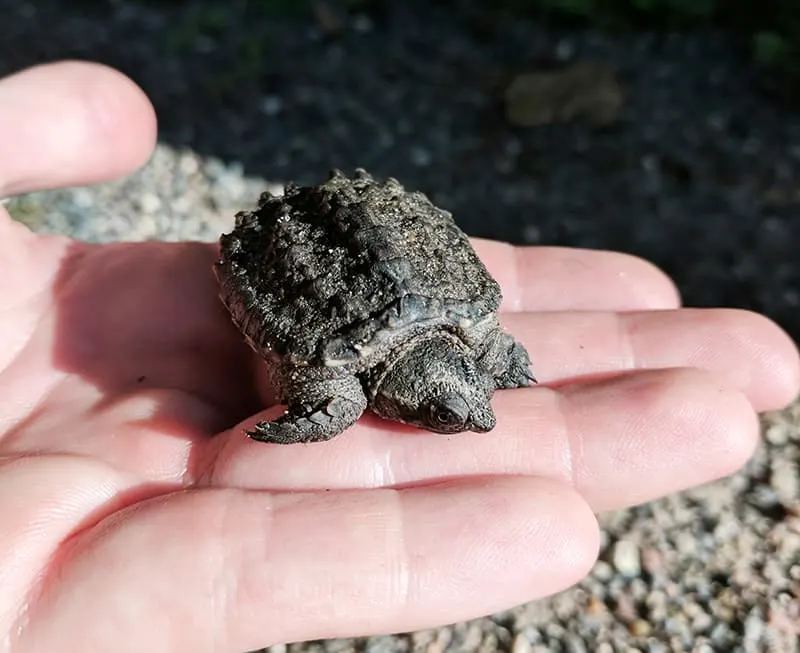
Classification/Taxonomy
Kingdom: Animalia
Phylum: Chordata
Class: Reptilia
Order: Testudines
Family: Chelydridae
Genus: Chelydra
Species: Chelydra Serpentina
History
This family of snapping turtles evolved in North America about 90 million years ago. They survived the time when dinosaurs went extinct 65 million years ago. Snapping turtles have not changed very much from their ancestors.
Predators
Young common snapping turtles are preyed upon by a variety of birds and animals. Crows and other creatures such as foxes, bullfrogs, and largemouth bass eat young snapping turtles. Both young and adult snapping turtles are preyed upon by river otters, great blue herons, and alligator snapping turtles. When common snapping turtles reach adulthood, they have very few predators.
The most dangerous predators of common snapping turtles are humans. We hunt and eat common snapping turtles for their meat. The common snapping turtle population is thriving. The conservation status of the common snapping turtle is listed as “least concern” on the IUCN Red List.
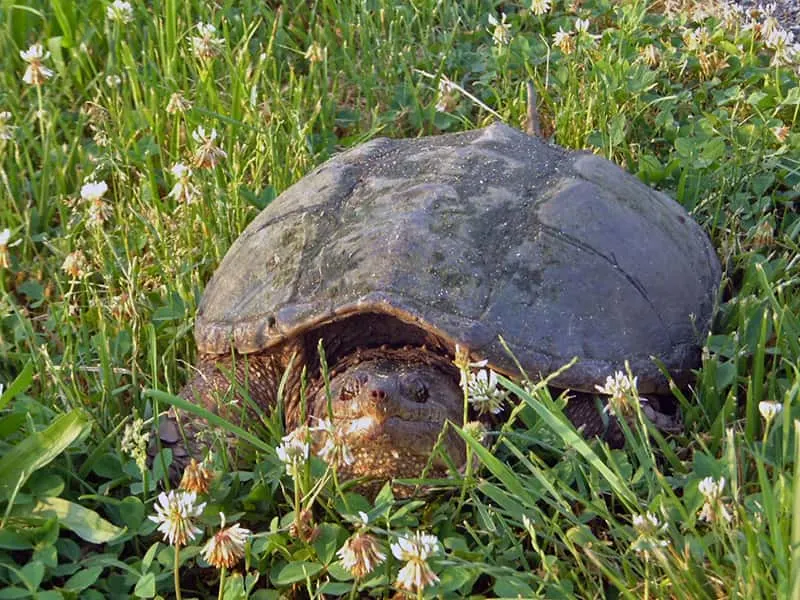
Lifespan
A common snapping turtle can live up to forty-five years in the wild, but they usually only live for thirty. They can live up to forty-seven years in captivity.
25+ Interesting Facts about Snapping Turtles
- Snapping turtles that live in colder areas hibernate in winter.
- Snapping turtles are only found in North America.
- Common snapping turtles do not bask in the sun.
- Instead of swimming, snapping turtles prefer to walk along the bottom of the ocean.
- If you see a snapping turtle on land, you should either call for help or let it continue its journey.
- The number of eggs laid by a snapping turtle is determined by the mother’s size.
- A female snapping turtle will often dig extra nests as “decoy nests” to distract predators.
- Nine out of ten turtle eggs are eaten by predators before they hatch.
- A baby snapping turtle is called a hatchling.
- Snapping turtles are the top predators in their aquatic habitat.
- Snapping turtle eggs that incubate in cooler temperatures produce males.
- Snapping turtle eggs that incubate in warmer temperatures produce females.
- A snapping turtle is different from other turtles because it can't withdraw its entire body into its shell.
- Male common snapping turtles use their sense of smell to find females.
- Snapping turtles use leg movements to communicate with one another.
- Common snapping turtles can bite off a human finger when threatened.
- Snapping turtle babies hatch with soft shells that harden as they get older.
- A nickname for a snapping turtle is “snapper”.
- Snapping turtles have been known to pull down great blue herons and eat them.
- The process of catching turtles is called “turtling.”
- Many states, such as New York, regulate the catching and trapping of turtles.
- The common snapping turtle is protected in Nova Scotia.
- Common snapping turtles do not make good pets for kids.
- The snapping turtle is named for its powerful jaws.
- Snapping turtle soup is a traditional dish in the United States and some Asian countries.
- A snapping turtle moves at 174 miles per hour when it strikes.
- Snapping turtles hide from predators in the aquatic habitat vegetation.
- A snapping turtle’s shell is called a “carapace.”
- The bumps on the skin of a snapping turtle are known as “tubercles.”
- Snapping turtles can only be found in fresh water.
- Snapping turtles use their senses of smell, sight, and touch to detect prey.
- When they are in the water, snapping turtles aren’t aggressive towards humans.
- A female snapping turtle lays her eggs during the warmer months of the year.
- Common snapping turtles mate in the water.
- Common snapping turtle eggs resemble ping-pong balls.
- We don’t understand how baby turtles know where to go to find water.
We hope you enjoyed learning all about snapping turtles! Did you learn any new facts? Let us know what other interesting things you know about them. We are eager to learn more!
